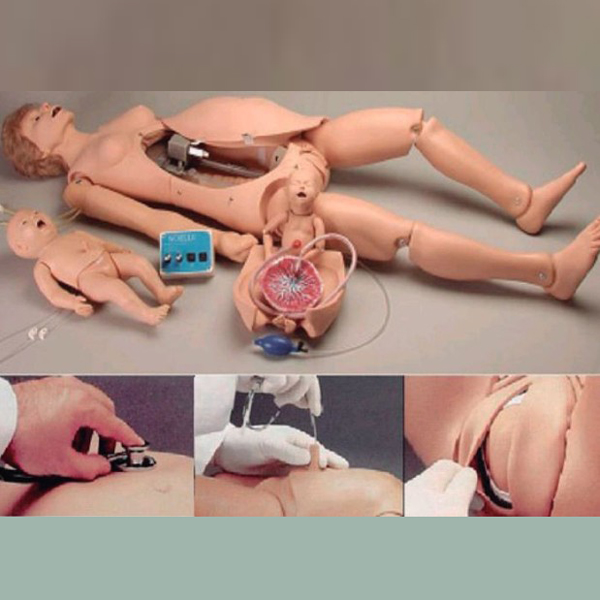

Article tag: Birth simulator,Childbirth and Maternal and Infant Emergency Model , women Childbirth?|
The Advanced Childbirth and Maternal and Infant Emergency Model is a medical teaching tool specially used to simulate the delivery process and maternal and infant emergency situations. This model usually has multiple functions, such as automatic delivery system, fetal and placenta delivery, prena...
The process of helping women give birth involves many aspects, including providing psychological support, monitoring labor, and guiding breathing and exertion. Here are some specific steps and suggestions:
Provide psychological support: Childbirth is a physical process, but it can also be an emotionally challenging time for many women. It is very important to provide psychological support to help them stay relaxed and confident. Encourage women to express their concerns and fears and provide them with comfort and encouragement.
Monitor labor: Closely monitor the mother's labor progress, including the frequency, duration, and intensity of contractions, as well as the fetal heart rate and position. This information can help you determine whether your labor is going well and whether you need to take additional steps.
Guidance on breathing and straining: Correct breathing and straining techniques are very important for mothers during labor. Instruct the mother to take deep breaths during contractions, relax her body, and push the fetus out when the contractions peak. Teach them the correct way to push, such as using their abdominal and back muscles instead of just their arms and legs.
Provide a comfortable environment: Ensure that the mother is in a comfortable, quiet and private environment. Adjust room temperature, light and sound to match the mother's preferences and needs. Provide soft mattresses, cushions and blankets for added comfort.
Assist the mother to move: During the delivery process, assisting the mother to move appropriately can help relieve discomfort and promote the progress of labor. For example, they can be helped to change positions, move around, or perform simple gymnastics.
Monitor fetal condition: Use equipment such as a fetal monitor to monitor the fetal heart rate and other physiological indicators. If any abnormalities are found, take necessary measures promptly, such as giving oxygen or performing an emergency cesarean section.
Maintain good communication with mothers: Maintain close communication with mothers and understand their needs and feelings. Encourage them to ask questions and give clear, concise answers. Remain patient and focused throughout the birth process so that she feels supported and cared for.
It’s important to note that every woman’s birth process is unique and needs to be handled flexibly on a case-by-case basis. If you have any questions or are unsure, seek help and advice from a medical professional promptly.
The Advanced Childbirth and Maternal and Infant Emergency Model is a medical teaching tool specially used to simulate the delivery process and maternal and infant emergency situations. This model usually has multiple functions, such as automatic delivery system, fetal and placenta delivery, prenatal cervical examination and postpartum episiotomy and suturing, etc., so as to demonstrate, observe and operate the maternal delivery process with bare hands.
